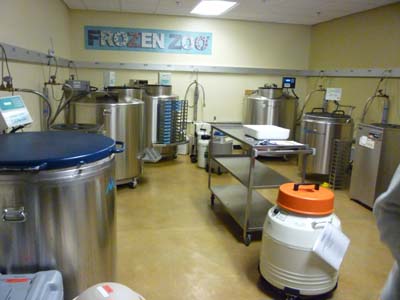World News – Whenever an endangered animal dies at the San Diego Zoo, researchers race out, regardless of the hour, to remove its sperm or eggs, maybe a bit of ear or eyeball, and carefully freeze the cells in liquid nitrogen.
 Today, the survival of the northern white rhinoceros and dozens of other species could hinge on the collection amassed over nearly 40 years that has become the largest gene bank of its kind: the Frozen Zoo.
Today, the survival of the northern white rhinoceros and dozens of other species could hinge on the collection amassed over nearly 40 years that has become the largest gene bank of its kind: the Frozen Zoo.
The icy vials may someday even be used in experiments to resurrect recently extinct animals, such as the Hawaiian Po’ouli bird. The stainless steel tanks hold the genetic material of more than 10,000 individual animals from more than 1,000 species and subspecies.
The Frozen Zoo’s work has taken on renewed urgency since the San Diego Safari Park lost 42-year-old Angalifu to cancer in December, leaving only five northern white rhinos left in the world — and all unable to reproduce. Scientists are racing against the clock to find the best way to utilize the bank’s frozen sperm to produce another one before the northern white goes extinct, which could happen within a decade.
The bank is valued as a genetic archive that has helped advance artificial insemination, in vitro fertilization, cloning and stem cell technology. But debate is stirring over how far such research should go. Paul Ehrlich, a senior fellow at the Stanford Woods Institute for the Environment at Stanford University, argues that the world should focus instead on the root causes of biodiversity loss, such as population growth and climate change.
“The Frozen Zoo is basically rearranging the deck chairs on the Titanic,” he said.
— The Associated Press

